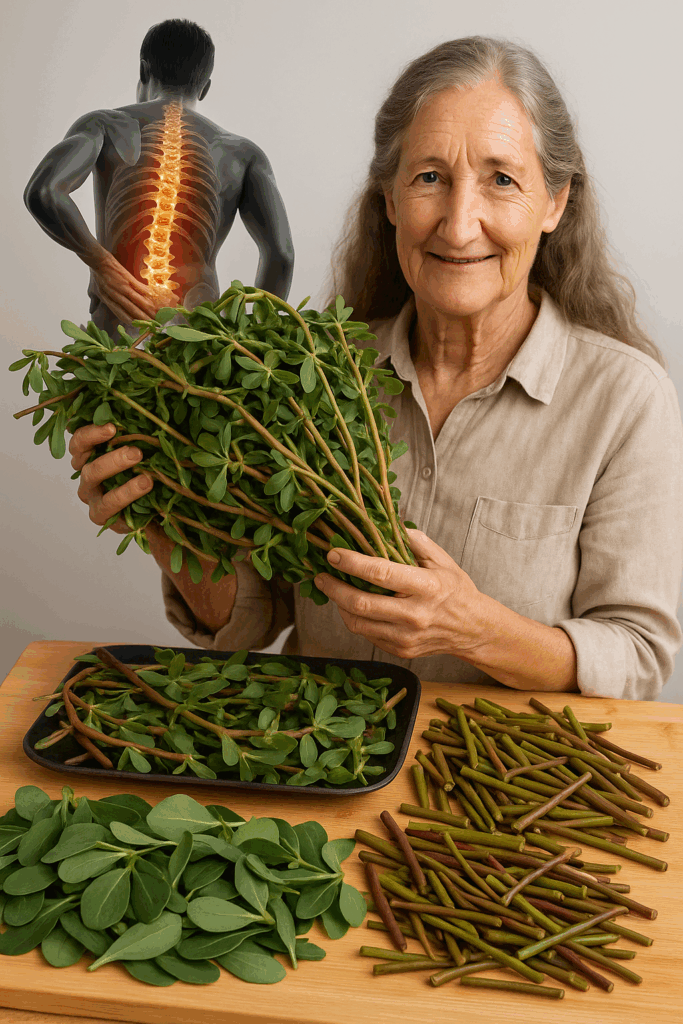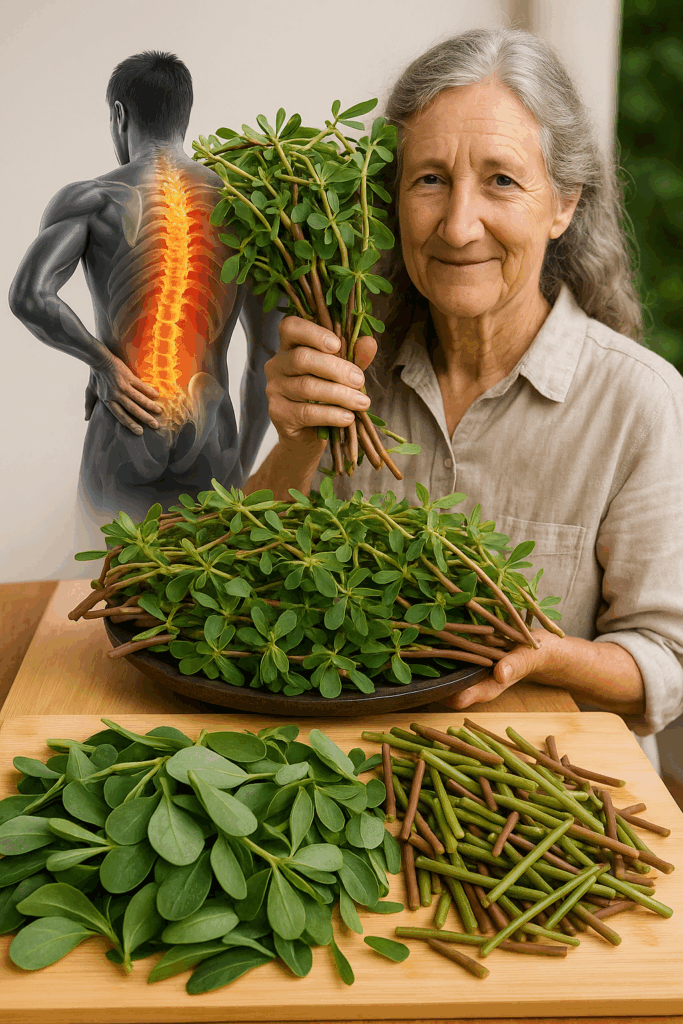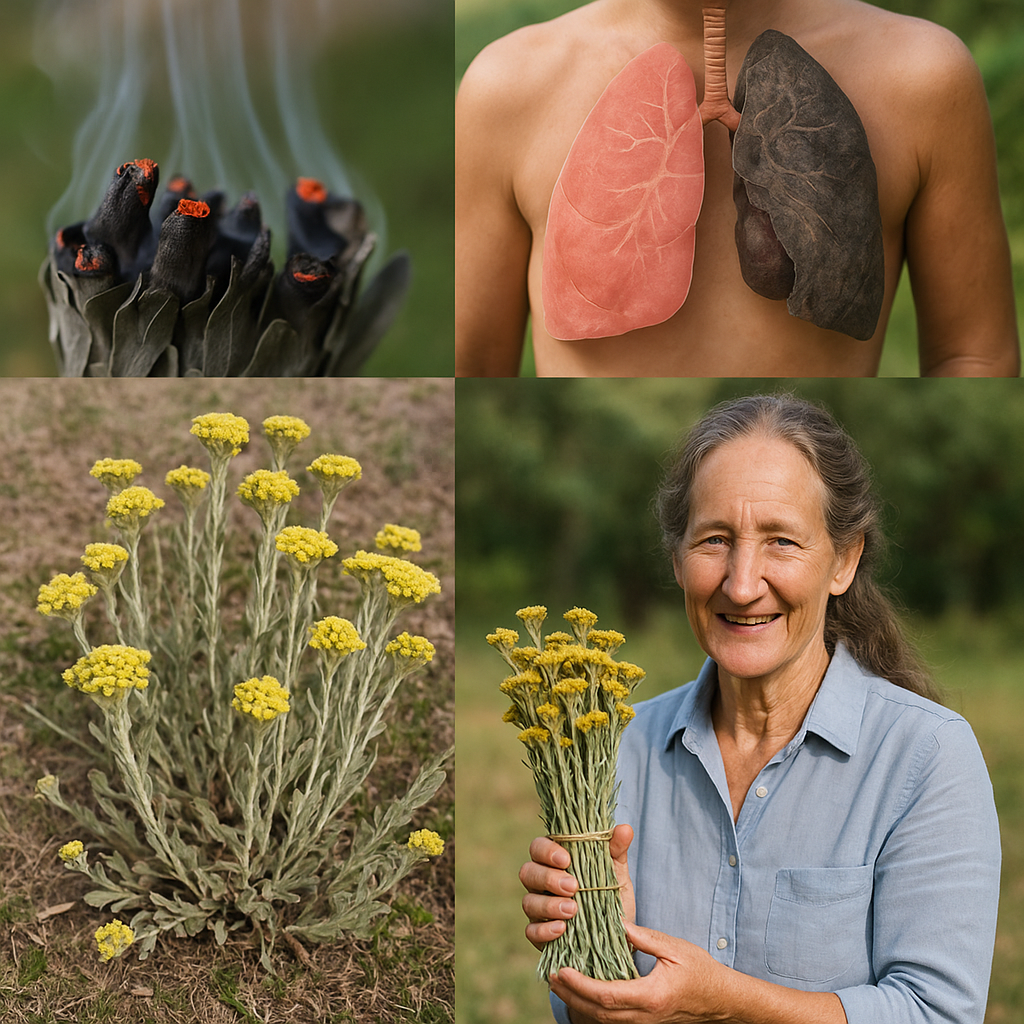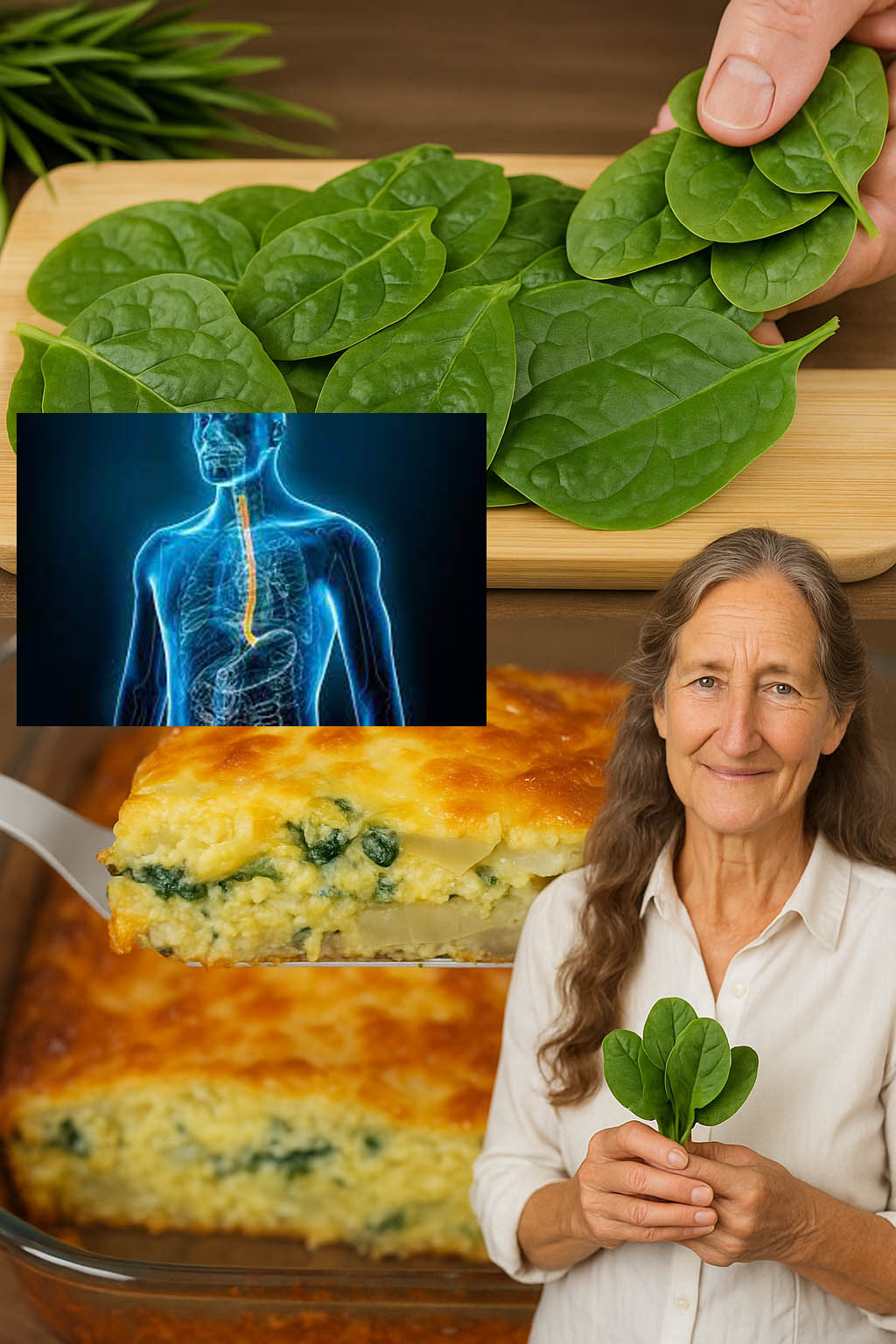Before you yank it out, take a closer look. That creeping green with juicy leaves might not be a garden nuisance after all—it could be one of the most nutritious, underestimated treasures growing right beneath your feet. This plant is Purslane, and if you’ve been calling it a weed, it’s time for a reality check.
Purslane, also known as Verdolaga, hogweed, or pigweed, has made a remarkable comeback—from being tossed out of gardens to being praised in gourmet kitchens and farmer’s markets. Once cherished by figures like Mahatma Gandhi and early Americans like Martha Washington, it’s now gaining fresh attention as a medicinal and culinary supergreen. Let’s uncover why this wild plant deserves a permanent spot in your garden, your kitchen, and maybe even your daily diet.

🍃 1. It’s the Richest Plant Source of Omega-3 Fatty Acids
Purslane isn’t just healthy—it’s extraordinary. According to Dr. Artemis Simopoulos, this humble weed contains more Omega-3 fatty acids than any other leafy vegetable on Earth. For vegans and plant-based eaters, that makes it a rare and potent source of these essential fats, supporting brain function, heart health, and inflammation control.
💪 2. A Nutritional Powerhouse Hidden in Plain Sight
Don’t let its wild appearance fool you. Purslane’s teardrop-shaped leaves are packed with nutrients that rival your most expensive greens. It’s rich in calcium, magnesium, potassium, iron, and folate—filling the nutrient gaps left by the Standard American Diet and strengthening overall health from within.
🌟 3. Fights Aging with Potent Antioxidants
Want to age gracefully? Purslane delivers a potent mix of antioxidants like glutathione and betalain, which help protect your cells from damage, combat oxidative stress, and slow down aging at the cellular level. It’s nature’s skincare from the inside out.
💤 4. Natural Source of Melatonin for Better Sleep
Unlike most greens, Purslane contains melatonin—the same hormone your brain produces to regulate sleep. Struggling with insomnia or irregular sleep patterns? Adding Purslane to your diet might support your body’s natural rhythm, without the need for synthetic pills.
🍋 5. A Tangy, Gourmet Flavor Chefs Love
Purslane isn’t just nutritious—it’s delicious. With a lemony tang and a slight peppery finish, it elevates salads, sandwiches, and soups. Chefs like Sergio Vitale, who grew up eating Purslane in southern Italy, celebrate its bold yet refreshing flavor that adds depth to almost any dish.
🌱 6. Supports Cholesterol Balance
Purslane contains betalain, an antioxidant that helps prevent cholesterol damage in your blood vessels and promotes healthier LDL cholesterol levels. It’s a heart-friendly ally that works quietly behind the scenes.
🧠 7. Natural Mood Support with Tryptophan
This plant carries tryptophan, an essential amino acid that boosts serotonin production—your natural mood elevator. It’s been linked to reduced symptoms of depression and improved emotional balance, helping you feel better both mentally and physically.
🌿 8. It’s Free, Resilient, and Easy to Grow
Purslane thrives in tough conditions—pavement cracks, garden beds, dry summers. It asks for nothing and gives everything. You don’t have to buy seeds or baby it. Just learn to recognize it, harvest it responsibly, and let it thrive alongside your other plants.
🥗 Bonus: How to Enjoy Purslane in Your Meals
If you’re ready to try this miracle green in the kitchen, here’s a simple and flavorful recipe:

🌿 Purslane & Basil Pesto
Ingredients:
• 2 cups young Purslane (leaves and stems, rinsed)
• A handful of fresh basil leaves
• 1 clove of garlic
• 45g toasted almonds
• Juice of half a lemon
• 50ml olive oil
• Salt & pepper to taste
Instructions:
• Blend Purslane, basil, garlic, almonds, and lemon juice in a food processor
• Slowly drizzle in olive oil while blending until creamy
• Season and enjoy with pasta, roasted veggies, or toasted bread
💧 Safety Tip
Always wash wild Purslane thoroughly, especially if foraged from roadsides or sprayed areas, to remove dirt or pesticide residue.
🌼 Final Thoughts: A Weed? Or a Wellness Warrior?
Purslane breaks every rule we thought we knew about weeds. It’s invasive—but in the best possible way. It doesn’t ask to be planted, yet it arrives just when your soil needs a boost. And where most weeds compete, this one contributes—to your health, your garden, and your plate.
The next time you see Purslane sneaking into your garden beds, don’t reach for the spade. Reach for your salad bowl. Because this plant isn’t here to be eliminated—it’s here to nourish.
🌿 Embrace it. Eat it. Let it grow. Your body will thank you.

